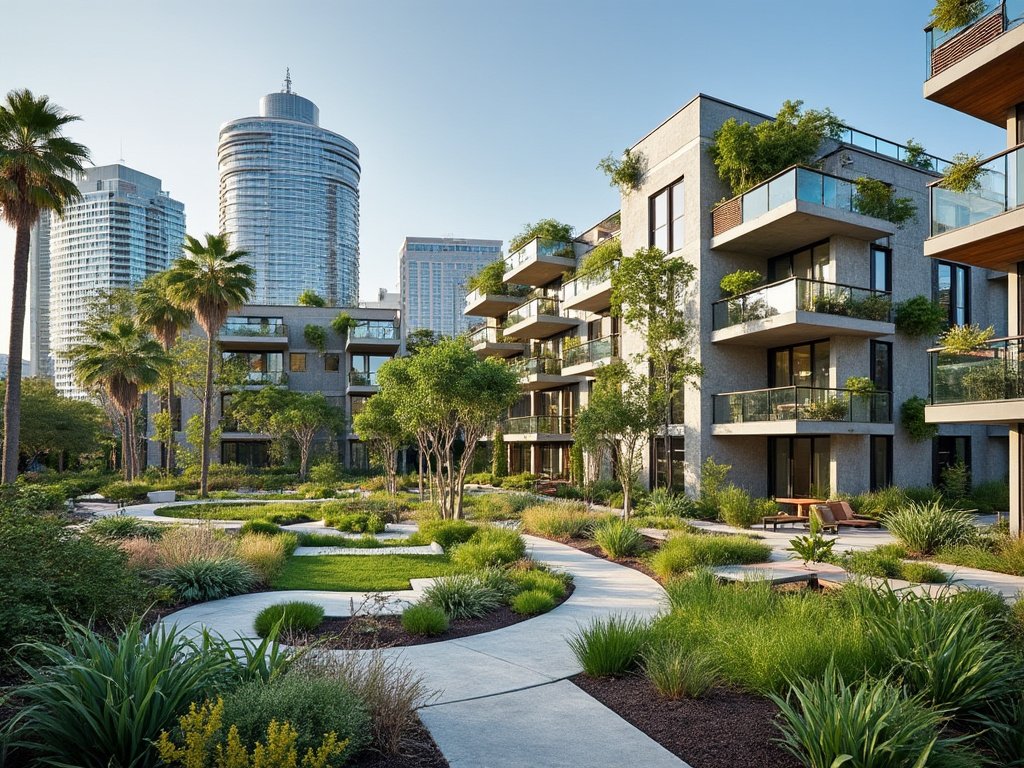Los Angeles, a city synonymous with glamour, creativity, and innovation, is undergoing a transformation aimed at tackling its most pressing challenges: sustainability and urban resilience. With groundbreaking policies and grassroots initiatives, the City of Angels is striving to reinvent itself as a global leader in green living.
The sprawling metropolis of Los Angeles has always been a city of contradictions. From the shimmering beaches of Santa Monica to the smog-choked freeways, LA has both dazzled and struggled under the weight of its immense growth. For decades, its love affair with cars and urban sprawl created an infrastructure at odds with environmental stewardship. But a new narrative is emerging—one of hope, innovation, and a fierce determination to redefine what it means to live sustainably in the 21st century.
In recent years, the push for sustainable urban living in Los Angeles has gained significant momentum. At the heart of this shift is the city’s ambitious Green New Deal, a comprehensive plan to reduce carbon emissions, transition to renewable energy, and prepare for the growing impacts of climate change. Mayor Karen Bass has championed policies aimed at electrifying public transit, retrofitting buildings for energy efficiency, and tackling the urban heat island effect. But while the government’s role is critical, much of the city’s transformation is being driven from the ground up.
A City of Neighborhoods, A Tapestry of Solutions
One of the most striking features of Los Angeles is its diversity—not just in terms of its people but in the character of its neighborhoods. From the trendy boutiques of Silver Lake to the historic architecture of Leimert Park, each district offers unique opportunities for sustainability initiatives.
Take, for example, the burgeoning movement toward urban farming. Across the city, vacant lots and underutilized spaces are being transformed into thriving community gardens. These gardens not only provide fresh produce to areas often described as food deserts but also foster a sense of community and shared purpose. Groups like LA Green Grounds and The Ron Finley Project are leading the charge, teaching residents how to grow their own food and advocating for policies that make urban agriculture more accessible.
In South Los Angeles, efforts to expand tree canopy cover are addressing decades of environmental inequity. Neighborhoods with fewer trees tend to suffer from higher temperatures and poorer air quality, a problem exacerbated by LA’s increasingly frequent heatwaves. Nonprofits like TreePeople are working to plant drought-tolerant trees in underserved areas, offering a simple yet effective solution to mitigate the impacts of climate change while beautifying communities.
Rethinking Mobility in the City of Cars
If there’s one thing Los Angeles is known for, it’s traffic. The endless streams of vehicles on the 405 or the 10 have become iconic, even as they symbolize the city’s struggles with air pollution and carbon emissions. But the tide is turning.
Metro, LA’s public transportation agency, has made bold investments in expanding its bus and rail network. Projects like the Regional Connector and the Purple Line extension are designed to make public transit more efficient and accessible, connecting key parts of the city and reducing reliance on cars. Additionally, LA’s growing network of bike lanes and pedestrian-friendly initiatives is encouraging residents to embrace alternative modes of transportation.
Perhaps most exciting is the city’s push toward electrification. Los Angeles aims to phase out gasoline-powered buses entirely by 2030, replacing them with zero-emission electric buses. Meanwhile, the proliferation of EV (electric vehicle) charging stations is making it easier than ever for Angelenos to make the switch to electric cars. Incentives for purchasing EVs, combined with state mandates requiring automakers to increase electric vehicle production, are helping to drive this transition.
Yet, challenges remain. Critics argue that LA’s public transit system is still underfunded and underserved in certain areas, particularly in lower-income neighborhoods. Addressing these disparities will be crucial if the city hopes to achieve its ambitious sustainability goals.
Housing: The Green Frontier
Another key battleground in LA’s sustainability efforts is housing. As the city grapples with a housing crisis that has left tens of thousands of people unhoused, it is also rethinking how homes are designed, built, and powered.
Los Angeles is embracing policies that encourage the construction of affordable, energy-efficient housing. Programs like Accessory Dwelling Unit (ADU) initiatives are making it easier for homeowners to build small, sustainable units on their properties, helping to alleviate the housing shortage while promoting green building practices. The city is also exploring ways to incentivize developers to include renewable energy systems, such as solar panels and greywater recycling, in new construction projects.
Equally important is the retrofitting of older buildings. Many of LA’s iconic structures, from its mid-century modern homes to its towering downtown skyscrapers, were built in an era when energy efficiency wasn’t a priority. The city’s new energy codes are pushing for widespread upgrades, including better insulation, energy-efficient lighting, and the installation of renewable energy systems.
For those already struggling to make ends meet, the city is working to ensure that sustainability is accessible. Programs that provide subsidies for energy-efficient appliances and utility bills are making it easier for low-income families to participate in the green revolution.
The Role of Technology and Innovation
Los Angeles has long been a hub of creativity and innovation, and its efforts toward sustainability are no exception. From startups developing cutting-edge clean energy solutions to university-led research on climate resilience, the city is harnessing technology to address its most urgent challenges.
One particularly exciting development is the rise of microgrids. These localized energy systems can operate independently or in conjunction with the larger grid, providing a reliable and renewable power source during outages or emergencies. In neighborhoods like Pacoima and Wilmington, pilot projects are demonstrating the potential of microgrids to reduce energy costs and increase resilience against climate-related disruptions.
Additionally, LA’s tech sector is playing a crucial role in developing sustainable solutions for everyday life. Companies are creating apps that connect residents with rideshare opportunities, reduce food waste, or locate nearby recycling facilities. These innovations are empowering individuals to make sustainable choices in their daily routines.
Building a Culture of Sustainability
At its core, Los Angeles’ transformation is about more than policies and technology—it’s about fostering a culture of sustainability. Across the city, schools are integrating environmental education into their curricula, teaching the next generation about the importance of conservation and climate action. Local businesses are stepping up as well, with many adopting green practices and promoting eco-friendly products.
Cultural events, from farmers’ markets to eco-focused art exhibitions, are helping to raise awareness and inspire action. The city’s vibrant creative community is leveraging its influence to highlight the urgency of the climate crisis, using film, music, and visual art to spark conversations and drive change.
A Model for the Future
As Los Angeles charts a path toward sustainable urban living, it faces no shortage of challenges. Rising temperatures, water scarcity, and economic inequality are formidable obstacles. But the city’s unique blend of innovation, diversity, and resilience gives it an edge.
If LA can succeed in creating a sustainable future, it will serve as a powerful model for cities around the world. The lessons learned here—about the importance of community-driven action, equitable solutions, and the integration of technology—can inspire other urban centers to follow suit.
In the end, Los Angeles’ transformation isn’t just about saving the environment; it’s about improving quality of life for everyone who calls the city home. By addressing its greatest challenges head-on, LA is proving that even in the face of adversity, it remains a city of dreams.





